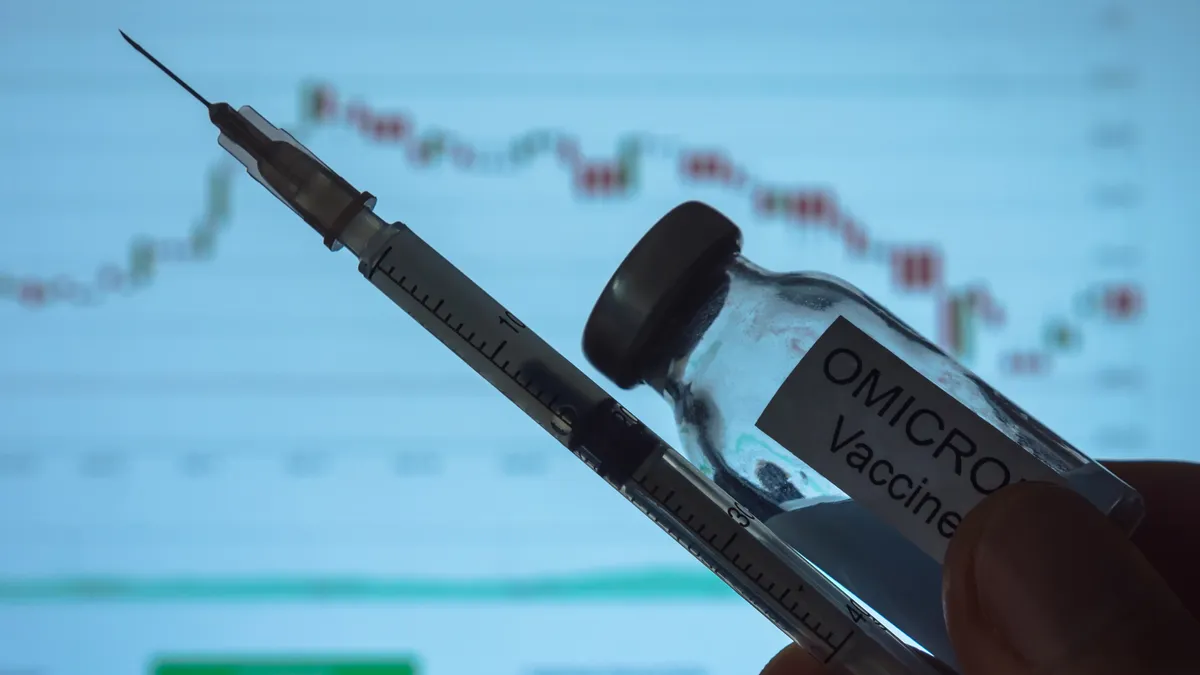With 14 of the top 20 pharma companies establishing manufacturing facilities in the Philippines, the country is clearly a go-to destination.
The Philippines, an island nation in Southeast Asia, has a population of more than 95 million people, making it the 12th most populated country in the world. In 2012, the Philippine economy grew faster than that of any Asian country except China, at a rate of 6.5%, according to Ames Gross, president of Pacific Bridge Medical, an Asian medical consulting company. During the same year, per household consumption went up by 6%. The rising wealth in the country has a knock-on effect on healthcare spending, with the amount spent on healthcare by the average Filipino rising from $30 in 2000 to $100 in 2012.
The Pharma Market
According to Maria Inez Pacia, general manager-Quintiles Philippines, 14 of the top 20 pharma companies in the world have manufacturing facilities in the Philippines. Global pharma companies dominate the Philippines marketplace, having captured three quarters of the Philippine drug market in 2012.
Mr. Gross says Novartis, Sanofi, and GlaxoSmithKline are among the largest foreign pharma companies in the Philippines. The large domestic pharma companies include United Laboratories, GV International, Pascual Laboratories, and Natrapharm.
The generics market is making strong gains in the Philippines and is now the fastest-growing segment in the country among both domestic and global companies.
“Previously, few Filipinos trusted generics and doctors, tempted by incentives from major drug companies, rarely prescribed non-branded drugs," Mr. Gross says. “But new laws have made it mandatory to use generic drugs in public hospitals, and as more doctors prescribe these drugs, they are gaining acceptance among Filipinos."
Mr. Gross notes generic drug companies, such as Taiwan’s Orient Europharma and Pakistan’s Getz Pharma are expanding their local operations, as is Novartis’ generic arm, Sandoz. In response, many foreign pharmaceutical firms are slashing the prices of their own branded drugs by as much as 60%.
Trials and Regulations
According to Anand Tharmaratnam, senior VP and head of Asia markets at Quintiles, Asia-Pacific is the new frontier for drug development as Western companies seek to develop and sell products there and emerging Asia companies seek to globalize. He notes that more than a quarter of the total number of clinical trials between 2009 and 2012 were conducted in Asia-Pacific, up from less than 7% between 2005 and 2007. There’s also a significant shift toward local trials carried out by Asian biopharma companies seeking to develop drugs for diseases with higher Asian incidences.
“It’s easy to see the reasons behind this shift: Asia-Pacific is home to 60% of the world’s population; it has vast numbers of patients with untreated or poorly treated diseases; urbanization is fueling a surge in Western lifestyle diseases, such as diabetes, obesity, and hypertension; and an aging populations and economic growth are driving demand for healthcare," Mr. Tharmaratnam says. The Philippines is emerging as a sought-after destination for clinical trials. A report from the Food and Drug Administration of the Philippines (PFDA) notes that the country rates third among 10 Southeast Asia countries in terms of the number of clinical trials.
Ms. Pacia says many medical centers, particularly those located in major cities, have been involved in clinical research and have performed high-quality GCP studies, adding that these centers can be quite competitive in terms of patient recruitment and costs.
“During the course of our work with sites in local hospitals, we have noted an increase in FDA/EMA inspections, which is a good indicator of the contribution coming from Philippine sites," she says. “While a number of sites have demonstrated their capabilities in performing clinical trials, the relatively long study start-up — regulatory approval/EC review, and contracting — versus other countries poses limitations in outright participation."
Ms. Pacia says in general, clinical research awareness has progressed rapidly across the country.
“Opportunities to participate in clinical trials as a sub-investigator or study coordinator during the doctors’ training in key institutions and the move by medical societies to increase participation and focus on obtaining local data have paved the way for this progress," she says.
In response to the industry’s call for a more robust regulatory control, the PFDA released new clinical trial guidelines in June 2012, Ms. Pacia says.
“According to the new guidelines, the regulatory review employs a sequential review by an FDA-accredited institution review board covering the technical and ethical review prior to FDA issuance of study conduct approval and import permit for the investigational product," she says. “This sequential review of a central EC and FDA and final decision from the FDA takes about 90 to 105 days. The new process, however, does not restrict the local ethical review boards to require ethical review, before implementation of the study at the specific site. In addition, more sites are now holding back on the execution of clinical trial agreements until ethical clearance has been provided."
There is also ongoing work by the Philippines Health Research Ethics Board (PHREB) (under the Department of Health) in the registration and accreditation of ethics review boards, Ms. Pacia notes. Only registered and accredited ERBs by PHREB are authorized to conduct review and provide recommendations to PFDA. The registration monitors and identifies resource and training needs of ERCs in reviewing health research while accreditation guarantees that ERCs are independent, efficient, and effective in performing their duties.
PFDA began restructuring to improve its services starting in 2013. As a result, the PFDA stopped receiving applications for certain procedures and resumed normal operations Feb. 1, 2013, Ms. Pacia says.
“It has also released the new organizational structure with the creation of four key centers focusing on device regulations, drug regulation, food regulations, and cosmetic regulation," she says. “Under the drug regulation is the clinical trial unit that reviews all trial applications."
In addition, the Philippines adopted the ASEAN Common Technical Dossier (ACTD) and Common Technical Requirements (ACTR) for pharmaceutical registration in July 2013, Ms. Pacia says.
“While this took some time, this is a move toward ASEAN harmonization," she says.
Navigating regulatory issues is a challenge for global companies operating in Asia. According to Kevin Lai, director of biomedical sciences and consumer businesses at the Singapore Economic Development Board (EDB), there has been increased emphasis on development of regulatory competencies and thought leadership to navigate Asia’s fragmented markets in recent years.
“Additionally, there has been a trend of companies establishing regional audit specialist teams in Asia with good regional and local insights," Mr. Lai says. “We foresee this trend of dedicated market access and regulatory affairs leadership teams to continue."
Healthcare Status and Access
The Philippines health service delivery has evolved into a dual delivery system of public and private provisions, Ms. Pacia says. The private services are used by about 30% of the population that can afford fee-for-service payments.
In late June 2013, Philippine President Benigno Aquino III signed a law expanding national healthcare coverage to all Filipinos under the country’s health scheme, PhilHealth, Mr. Gross says.
The National Health Insurance Act of 2013 prioritizes the healthcare needs of underprivileged, sick, elderly, persons with disabilities (PWDs), women and children, and provides free healthcare services to indigents.
Mr. Gross says currently, 80 million of the Philippine’s 95 million people are covered under the program, which has grown rapidly since the mid-2000s. A provision in the original bill excluded local governments from enrolling all patient groups until they had “reasonable access to adequate and acceptable health care services." The new law voids that provision.
While the expansion of national coverage should create opportunities for global pharma companies by increasing the number of Filipinos eligible for reimbursement, it might also put pressure on the government to further reduce reimbursement pricing, Mr. Gross notes.
According to Mr. Gross the two main diseases in the Philippines are hepatitis B and pneumonia.
“Hepatitis B has a particularly high presence in the Philippines and affects more than 7.7 million Filipinos — that’s about 1 of 10 people," Mr. Gross says.
In July 2011, the Philippine subsidiary of Roche along with the Hepatology Society of the Philippines launched a new program to help hepatitis B patients gain access to treatment at discounted rates, he says. The PEGASSIST Easy Access Plan allows patients to access peg-interferon alfa-2a hepatitis treatment medication with discounts up to about 50%. In addition, hepatitis B patients can have free access to selected laboratory tests that would otherwise be very expensive. Patients can find out if they qualify by visiting their gastroenterologist and consulting a financial assessment agency.
“The hepatitis B vaccine is 95% effective in preventing the hepatitis B virus infection and its consequences," Mr. Gross says. “The high burden of hepatitis B in the Philippines can be partially attributed to the patients’ inability to afford expensive treatments."
With regard to pneumonia, the PFDA approved the use of the vaccine Prevnar 13 (Pneumococcal conjugate vaccine) in adults aged 50 years or older in 2011.
“This vaccine is produced by Pfizer and is the first and only vaccine in the Philippines that aims to prevent pneumonia," Mr. Gross says. “Pneumonia is the leading vaccine-preventable cause of death in the country. Studies show that pneumonia is the leading cause of illness and the fourth leading cause of death among Filipinos over the age of 50."
Over the past year, Pfizer’s Philippine subsidiary has strengthened its campaign against pneumococcal diseases by working with local government units and organizations for an anti-pneumonia vaccination drive, he notes.
“During the course of our work with sites in local hospitals, we have noted an increase in FDA/EMA inspections, which is a good indicator of the contribution coming from Philippine sites."
Maria Inez Pacia / Quintiles
The Philippines at a Glance
Total population: 96,707,000
Gross national income per capita (PPP international $): 4,140
Life expectancy at birth m/f (years): 66/73
Probability of dying under 5 (per 1,000 live births): 30
Probability of dying between 15 and 60 years m/f (per 1,000 population): 256/137
Total expenditure on health per capita (International $ 2011): 169
Total expenditure on health as % of GDP (2011): 4.1
Source: Global Health Observatory. Figures are for 2009 unless otherwise indicated.
The Food and Drug Administration of the Philippines (PFDA)
General Functions
A. Develops plans, policies, programs, and strategies for regulating processed foods, drugs, and other related products
B. Formulates rules, regulations, and standards for licensing and accreditation of processed foods, drugs, and other related products
C. Conducts licensing and accreditation of processed foods, drugs, and other related products.
D. Provides technical, consultative, and advisory services to and develops capability of field offices on licensing and enforcement of laws, rules, and regulations pertaining to processed foods, drugs, and other related products.
E. Monitors, evaluates, and ensures compliance of manufacturers, distributors, advertisers, and retailers of processed foods, drugs, and other related products to health rules and regulations and standards of quality.
F. Advises the Secretary and Undersecretary of Health on matters pertaining to regulation of processed foods, drugs, and other related products.
1. Policy, Planning and Advocacy Division
Specific Functions
A. Develops plans, policies, and programs pertaining to the regulation of processed foods, drugs, and other related products.
B. Provides technical information and assistance to clients and the general public on matters pertaining to food and drug laws, regulations, functions, and services.
C. Develops and maintains a database of all licensed/accredited processed foods, drugs, and other related products.
D. Promotes rational drug use, self-reliance, and tailored procurement and monitors drug prices per Generics Law and the Philippine Drug Formulary.
E. Conducts pharmaco-epidemiological and pharmaco-economic analysis.
2. Regulation Division I
Specific Functions
A. Conducts inspection and issues licenses for the operation of establishments involved in the importation, exportation, distribution, and retailing of processed foods, drugs, medical devices, in vitro reagents, cosmetics, and household hazardous substance.
B. Monitors and ensures quality of processed foods, drugs, and other related products through samples from outlets and ports of entry.
C. Enforces seizure, confiscation, and condemnation orders covering products violating food and drug laws, regulations, and standards.
D. Provides technical consultative and advisory services and develops capability of field offices on licensing and enforcement of regulations, including monitoring of adverse drug reactions.
E. Develops the technical capability of Food and Drug Regulation Officers assigned at field offices.
3. Regulation Division II
Specific Functions
A. Conducts inspection and issues licenses for the operation of establishments involved in the manufacture and re-packing of processed foods, drugs, medical devices, in vitro diagnostic reagents, cosmetics, and household hazardous substances.
B. Monitors and ensures compliance of manufacturers with requirements of Good Manufacturing Practices (GMP).
C. Enforces seizure, confiscation, and condemnation orders covering products violating food and drug laws, regulations, and standards.
D. Develops the technical capability of Food and Drug Regulation Officers assigned at field offices.
4. Products Services Division
Specific Functions
A. Formulates standards and guidelines for the registration of processed foods, drugs, cosmetics, medical devices, in vitro diagnostic reagents, and household hazardous substances.
B. Evaluates and processes application and issues certificates of product registration and certificates of product listing.
C. Provides assistance in the monitoring of products violating food and drug laws, regulations, and standards.
5. Laboratory Services
Division Specific Functions
A. Conducts laboratory tests on finished products to determine compliance with standards of safety, efficacy, purity, and quality.
B. Conducts tests on packaging materials used for foods, drugs, cosmetics, medical devices, and other related products.
C. Produces properly-bred laboratory animals used for toxicological examinations, bioassay, and biological research and development.
6. Administrative Division
Specific Functions
A. Provides general administrative and logistics support services such as personnel, finance, communication, documentation, security, and facility operation and maintenance services.
7. Legal Division
Specific Functions
A. Provides legal advice in the enforcement of food and drug laws and regulation.
B. Conducts administrative proceedings and quasi-judicial hearings on cases related to food and drug laws and regulations.
C. Prepares recommendations, resolutions, and other administrative issuances pertaining to regulation of processed foods, drugs, and other related products.
D. Conducts investigation of consumer complaints on products regulated by the bureau.
E. Monitors product advertisements and promotions to check compliance with existing guidelines on medical and nutritional claims.


















